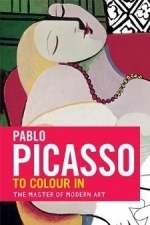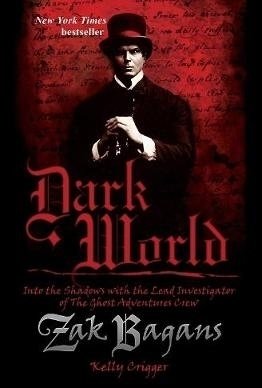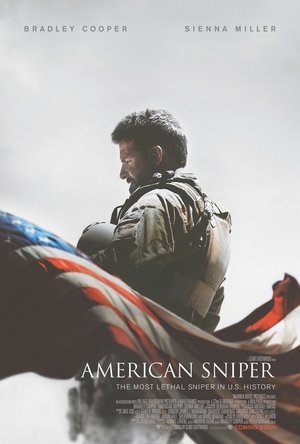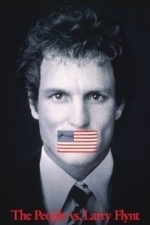I do not agree with the main argument of this biography: that William Shakespeare was, in fact, only a pen name for Edward de Vere, the Earl of Oxford. No. I do not agree with this claim, like so many other Shakespeare scholars and lovers because the "facts" put forth are just very thinly stretched ideas and concepts that cannot be proven.
This book, instead of pushing me to think about how this fact could even possibly be true, is more about the life of Edward de Vere and how some of the circumstances in his life would be able to loosely connect to the plays Shakespeare had written. In tying in the plays, Anderson thinks he is making a stronger claim for his argument, but is honestly just trying to connect things that are unalike to "prove" what he is thinking. As an English major, I don't really like that way of thinking much.
Most of what he was trying to argue could have been left out and, instead, just have the appendices left in there. In the approximately sixty pages of the four appendices, he stated what over three hundred pages could not. No, I do not agree with the argument he is making, but it seems like it is stronger and more coherent in the appendix.
I want to point out a specific quotation from the Appendix A on page 381 to make a point about this book. It states: The thesis of this book, the "Oxfordian" proposition that Edward de Vere was Shake-speare, is a theory built on circumstantial evidence. There is no single "smoking gun" document that leads one inexorably to the conclusion that de Vere wrote Hamlet, King Lear, the Sonnets, etc." I understand that it is difficult to try to prove a theory that many argue against (myself included), but basing your argument solely on circumstantial evidence is not the way to go. It makes the argument, at least to me, seem less realistic and, in all honesty, difficult to agree with. If you cannot prove someone is guilty solely based on circumstantial evidence, you should not try to prove a complex argument that a famous playwright was not a real person, but, in fact, a pseudonym for another historical figure around the same time.
The "facts" that de Vere's life has similar qualities to the plays written by Shakespeare leading to the thought that de Vere, himself, is Shakespeare is a stretch, and not a convincing one at that.
Overall, I did not enjoy this book and I did not find it convincing at all. It felt more like a history lesson about the background of Edward de Vere rather than any kind of argument towards the idea that he could have been Shakespeare.
In my heart of hearts, I will always believe that William Shakespeare was, in fact, a real man by the name of William Shakespeare, not some made up name for a man who wanted to keep his private life separate from the public.
Hazel (1853 KP) rated Picasso: The Colouring Book in Books
Dec 7, 2018
...
<i>Pablo Picasso: To Colour In</i> was published in April 2016 with the intention of using the popular fad to educate readers/colouring book enthusiasts about the techniques and secrets of the great master. Each work included in the book has a brief paragraph explaining what it is (in case you cannot tell) and a few details about Picasso’s intentions or the events happening in his life at the time.
...
Naturally, it would be impossible to produce a book of all Picasso’s recorded works, but the editors of this particular colouring book have carefully selected examples that span the majority of his life, thus encompassing the different styles he experimented with.
The author of the text – presumably Frédérique Cassegrain, who also wrote the biography and information for each included artwork – gives helpful advice about how to colour in the outlined versions of Picasso’s paintings. The paper is thick enough to be suitable for paints, particular Gouache, which is water soluble and easily blended. Alternatively, coloured pencils may be used, preferably of artistic quality, which may be more suitable for those less confident in art and design. Another option, although not mentioned by the author, are felt-tip pens. Usually, these should be avoided due to ink bleeding through the page, however, the paper is single sided, so there is no chance of damaging the following colouring page in the book.
Purchasing Pablo Picasso: To Colour In and completing the book, provides not only hours of fun and relaxation, but an opportunity to discover and understand the artist. Unlike at a gallery where the brain may switch off, being able to go away and return to the book gives us time to absorb the information and concentrate more clearly on the details of each painting.
Opposite each colouring page is a copy of the original in full colour, meaning that, if one desired, one could replicate Picasso’s work as closely as possible. By doing, rather than just looking, we begin to understand the colour choices, piece together the geometric shapes to form an image and begin to understand the thought processes of the artist.
Interestingly, there are two paintings that stand out amongst all the others. These were produced during and after the First World War, a time when Picasso returned to a more classical style of artwork. These are The Pipes of Pan (1923) and The Bathers (1918). Both show a completely different side to Picasso and would not immediately be recognised as his own work. Despite not being entirely life-like, there are no elements of Cubism or Surrealism and the colour palette is altogether natural. Picasso has focused on shading and tone to create a realistic appearance, a contrast to the flattened portraits he is known for.
...
Pablo Picasso: To Colour In will appeal to artists, art historians and other creatives with its contrast of light relief and in-depth knowledge. The book is available online at retailers such as Amazon and The Book Depository from approximately £6. If Picasso is not your thing, there are other artists available in the series of colouring books, including Klimt, Hokusai (Japanese Art), Monet, Van Gogh, Caillebotte and Manet (Impressionists), and Paul Klee. Whatever your preference, prepare to learn whilst you are relaxing and having fun.
Zak begins by talking about the experiences he’s had with spirits prior to the series, and explaining why his own nature led him to this danger’s-edge career path. It’s not a biography however, and in some places is more like a manual for future ghost hunters.
There is an element of progression in the book, in that it starts by concentrating on innocent spirits, which he admits make up the majority; followed by confused spirits, who are sometimes unaware that they have died. This is succeeded by chapters on angry spirits, followed by downright evil spirits, which he refers to as demons.
The book starts with less dramatic phenomena such as words being heard through a white noise generator, emotional transference, and unexplained orbs of light on camera. But this is quickly followed up by tales of pebbles and shards being levitated vertically and flung horizontally by unseen hands, and physical scratch marks on Zak’s back! Zak also comes dangerously close to being possessed!
When Zak carries out an investigation, he starts by researching the history of the buildings and accompanying remaining personalities linked to the buildings. This makes for better story-telling, both on the screen, and certainly in his book.
I am a follower of the show when it’s available in the UK, and have always been intrigued by the equipment they use. I was expecting the book to be heavily edited, and, as such lacking in this kind of detail. However I was very pleasantly surprised - Zak even goes as far as explaining which pieces of equipment are better, and why. To an extent, the book can serve as a manual for would be ghost hunters.
Zak explains the difference between residual and intelligent hauntings, and chronicles instances where the lines between the two are blurred. He also documents moments when he’s had simultaneous significant readings on several devices, and argues that that in itself provides excellent evidence of the paranormal.
The nerd that I am looked forward to the section on the scientific theories for these paranormal experiences - and I wasn’t disappointed! Several theories were put forward and they form one of the most accessible guides to scientific theories that I’ve ever read! Zak discusses how each theory fits particular experiences of his, and compares and contrasts them for different phenomena.
The book is rounded off with Zak relating his ambitions for the field of paranormal investigation, where he puts a case forward for a central repository of data. In this section, we also hear from other prominent figures in the field, with their hopes for the field, including a striking passage from Marie D. Jones.
The book has high entertainment value, but a mere book, even one written as seriously as this, won’t make a believer out of a sceptic. Its content provides essential background for a would-be ghost hunter however. A recommended read for the open-minded and curious.
Gareth von Kallenbach (980 KP) rated American Sniper (2015) in Movies
Aug 6, 2019
American Sniper sees Bradley Cooper as Chris Kyle in his second movie with “American” in the title (see 2013’s American Hustle). Most of us know the story of Chris Kyle, but for those that don’t here’s a quick rundown. Chris Kyle is the most lethal sniper in American history with 160 confirmed kills as a Navy SEAL, and another 95 probable kills. He served four tours, and wrote a book about his life. This film is based on that book. It tells the story of how he was influenced by his father, joined the military, and then went on to serve four tours while trying to balance his life at home with his wife and children. Acting as the true Sheepdog to all in his life, American Sniper looks at the struggle Kyle went through, and tells the story with passion and respect.
Cooper did a fantastic job portraying Texas-native Kyle. He was almost unrecognizable onscreen, as he put in 8 months of prep to get ready for this role, including a 4-hour a day training regime, and another two with a vocal coach. It was even said that some of Kyle’s brothers-in-arms who helped train Cooper and serve as consultants on the movie could feel his presence through Cooper at the end of training and all throughout filming. Sienna Miller was a great compliment to Cooper’s performance as Taya Kyle, Chris’ wife and the mother of his children. And not surprisingly, Clint Eastwood knocked it out of the park in this go at the Director’s chair. This is his best movie in years, though one would hope so with Chris Kyle’s father threatening to unleash hell if the memory of his son was disrespected with the film.
Mr. Kyle’s passing was a tragic event for those that knew him, and even those that did not know him. I think he may rest well knowing that this film, adapted from his own auto-biography, was handled beautifully with such passion and respect. If I have one issue with the film, it was the rapidity at which things progressed. So many different events packed into 15 minute segments with time just seemed to be rushing like a river, and glossing over parts of the story that could really have used some more build up or exploring. But such is the case when adapting a movie from a book. Though I am sure that movie-goers would not have minded lengthy the movie a bit, even with a run-time of 132 minutes.
If you see one movie this month, let it be American Sniper. If you have not heard of Chris Kyle, or his story, go see American Sniper. Hopefully, the Legend will live on through the lives he touched, and saved.

MP3 Quran- Abdurrehman Al Sudais
Education and Utilities
App
Quran Audio-Al Sudais is the ultimate Quran application for iPhone/Ipad users with Quran recitations...
Whisperin' Bill Anderson: An Unprecedented Life in Country Music
Bill Anderson and Peter Cooper
Book
Whisperin' Bill: An Unprecedented Life in Country Music presents a revealing portrait of Bill...
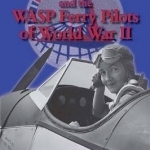
Nancy Love and the WASP Ferry Pilots of World War II
Book
She flew the swift P-51 and the capricious P-38, but the heavy, four-engine B-17 bomber and C-54...
Andy K (10823 KP) rated The People Vs. Larry Flynt (1996) in Movies
Sep 14, 2019
This time he decides to take on a subject he is passionate about through the lens of someone he doesn't particularly like. It is hard to believe the real Larry Flynt became a poster child for free speech and freedom of expression just so he could peddle Hustler magazine which showed every variety of "smut", "vile" and immoral behavior and imagery which makes most people disgusted. They even featured a cartoon depicting the characters from "The Wizard of Oz" getting it on with each other!
Larry Flynt started with his brother managing a strip club, but dreaming for something more. Larry decided he would publish a "newsletter" to increase awareness of the club. Upon publication, people became interested in viewing and subscribing to its controversial content, thus an empire was born.
From this club Larry also met his latest dancer soon to be wife, Althea.
The hits started coming almost immediately with different groups causing trouble for Larry and having him arrested. His legal battles soon began as well. His lawyer is not able to control his increasingly belligerent client who shows no respect for the court and openly mocked and disrespected it. Unfortunately, after one of his court appearances, he and his lawyer were shot by a sniper leaving Larry paralyzed from the waist down.
Larry didn't let up; however, deciding instead to take on Reverend Jerry Falwell in Hustler which would ultimately end up with his case being seen at the US Supreme Court.
No stranger to telling a keen biography (Amadeus ranks among the greatest biopics in movie history), director Forman manages to fashion a true tale with such fervor and passion, you get drawn in almost immediately. Even if you hate Larry's message and attitude, you must ultimately completely agree with his right to express it.
Woody Harrelson began getting noticed as a dramatic actor in 1994 with Natural Born Killers and continues to this day including blockbusters like Solo and The Hunger Games franchise as well as meaningful dramatic roles in recent films like Three Billboards and Game Change, Hard to believe the numskull from Cheers has blossomed into a full fledged movie star. His Academy Award nominated performance in this film is so well deserved. He is able to make Larry Flynt repulsive and sympathetic, rude and adorable as well as repugnant and charming all at the same time.
Courtney Love comes form nowhere and plays Larry's wife Althea with energy and really give it her all showing herself as the woman who would stand by her husband no matter what and up against the system. An early performance from Edward Norton is also welcome coming right on the heels of his breakout role in Primal Fear.
The courtroom scenes and not revolutionary, however, the drama and intensity are there broken up by Larry's quips and infant like behavior.
A very entertaining watch from a true master filmmaker highly recommended.

RESCUE: Heroes in Action
Games
App
Out now: The first expansion for RESCUE: Heroes in Action: Rising Storm with new vehicles and...
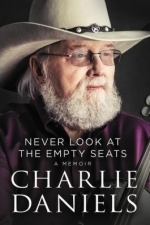
Never Look at the Empty Seats: A Memoir
Book
A tale of hard work, musical discovery, and faith, Charlie Daniels’s journey has been one of a...
Music biography

